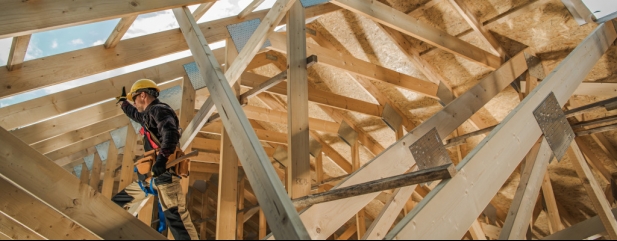Archived article
Please note that tax, investment, pension and ISA rules can change and the information and any views contained in this article may now be inaccurate.
Is good news on the UK property surge now priced into housebuilders?

The muted reaction to a positive update from housebuilder Vistry (VTY) on 17 May suggests the market has already priced in the current buoyant property sector conditions and may be concerned about their sustainability.
In the wake of the pandemic there has been booming demand for UK houses and a parallel boost for the repair, maintenance and improvement market.
The latest report from estate agency portal Rightmove (RMV) showed the average price of houses coming to market between mid-April and mid-May hit an all-time high of £333,564.
That’s a jump of £5,767 or 1.8% in just a month. Between mid-March and mid-April, prices had already jumped £6,733 or 2.1%.
The surge in demand has been partly fuelled by the Government’s decision to remove stamp duty on house purchases up to a value of £500,000 until the end of June. After that, there is no duty on the first £250,000 until the end of September. The question is what happens after that date, particularly if there is an increase in unemployment.
Not only are prices at an all-time high but transaction volumes are also at record levels with the time taken to sell a house at an all-time low. ‘Family homes with three bedrooms or more are like gold dust in many areas of the country, especially in parts of the north,’ says Rightmove’s director of property data Tim Bannister.
For example, there is less than half the available stock of three bedroom ‘second-stepper’ houses in the North East compared with 2019. Nationwide, in March almost a quarter of homes with a sale agreed had been on the market for less than a week.
COST PRESSURES
The feeding frenzy in house buying has led to spiralling demand for repair, maintenance and improvement, which in turn has led to a shortage of builders’ vans, scaffolding and skips.
On top of this, Brexit and supply chain issues have led to a severe shortage of certain building materials and a spike in prices. Softwood timber has almost doubled in six months, steel joists have gone through the roof after an 80% increase in iron ore prices, and roof tiles are almost unobtainable.
According to the Chartered Institute of Procurement and Supply, building material costs are rising at the fastest pace since it began tracking them in April 1997.
This could threaten the profitability of housebuilders and construction materials firms at a time when they are seeing bumper demand.
As investment Berenberg comments: ‘The large housebuilders maintain long-term procurement agreements with longstanding suppliers and, as such, while there will be some challenges in availability, that is mainly a problem for SME (small to medium sized) builders. However, price inflation does impact them.’
Important information:
These articles are provided by Shares magazine which is published by AJ Bell Media, a part of AJ Bell. Shares is not written by AJ Bell.
Shares is provided for your general information and use and is not a personal recommendation to invest. It is not intended to be relied upon by you in making or not making any investment decisions. The investments referred to in these articles will not be suitable for all investors. If in doubt please seek appropriate independent financial advice.
Investors acting on the information in these articles do so at their own risk and AJ Bell Media and its staff do not accept liability for losses suffered by investors as a result of their investment decisions.
Issue contents
Case study
Feature
Great Ideas
- Hill & Smith set to cash in on US infrastructure boom
- Improving backdrop for still cheap TT Electronics
- Buy Shield Therapeutics as it stands on cusp of US breakthrough
- Bank a tidy profit on UDG as private equity swoops
- Investors toast Diageo’s £4.5 billion capital return
- Coca-Cola HBC should fizz higher on reopening

 magazine
magazine








